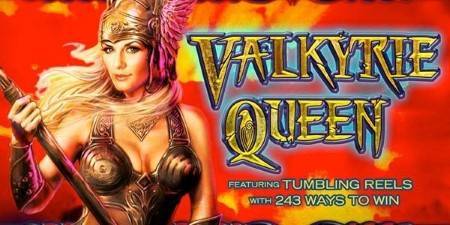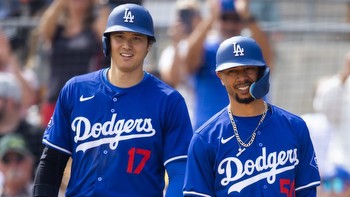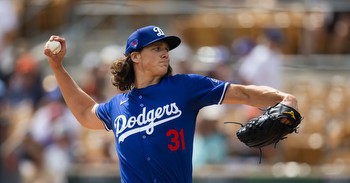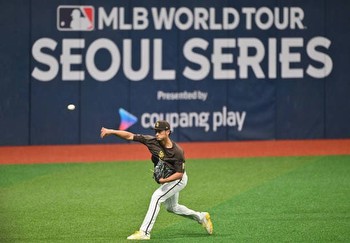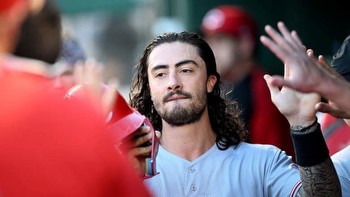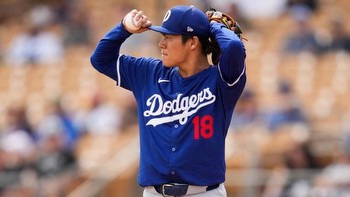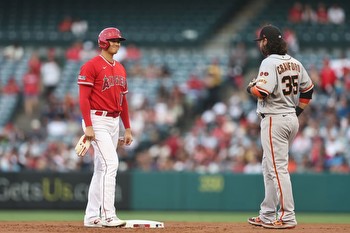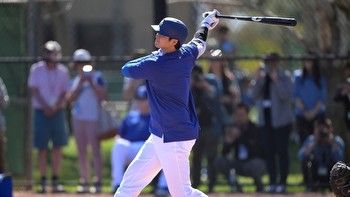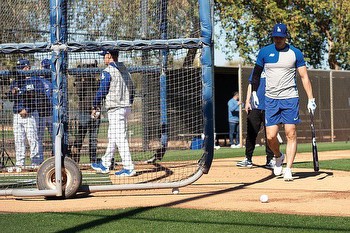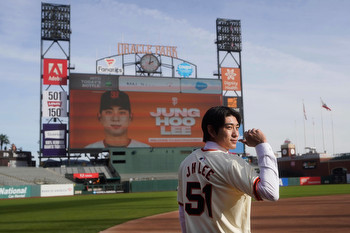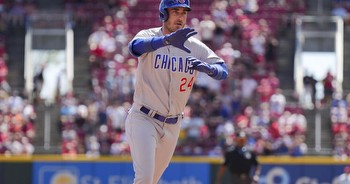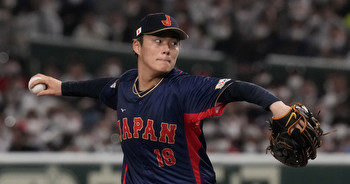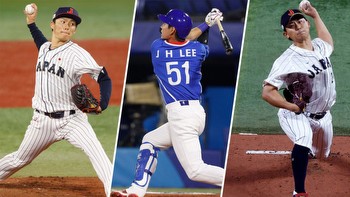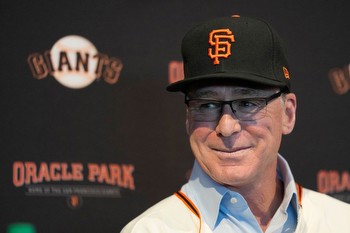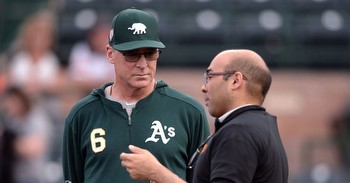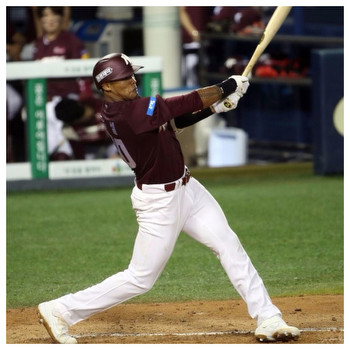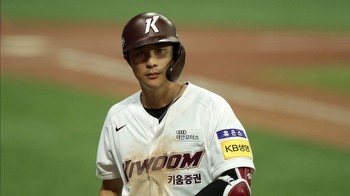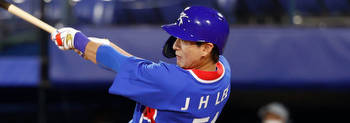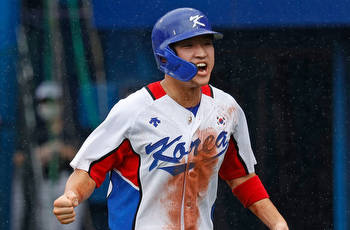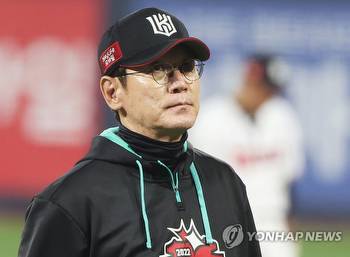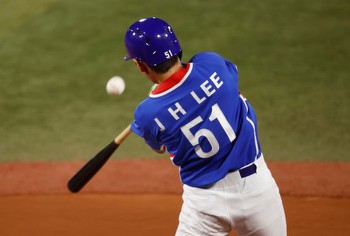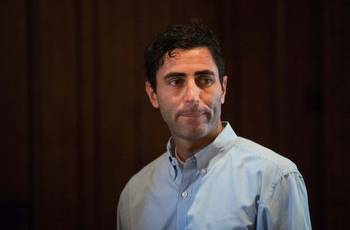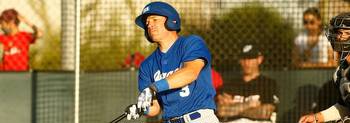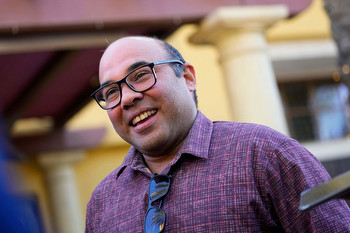Breaking down the Giants’ $132 million bet on Jung Hoo Lee: ‘They paid for his ceiling’
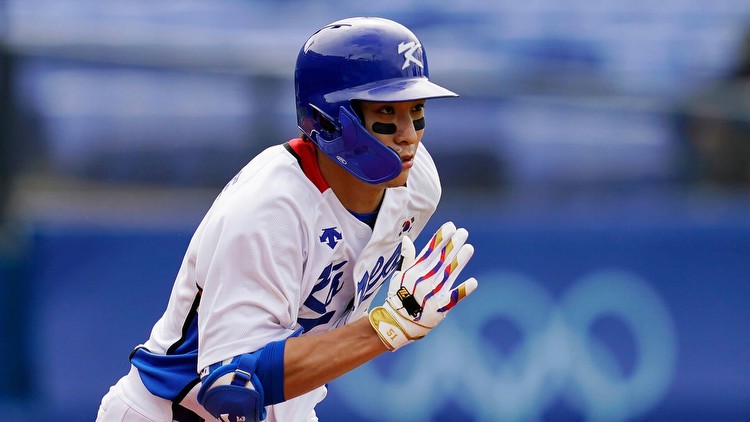
Jung Hoo Lee was 18 years old, weighed 140 pounds soaking wet, and was attempting to compete at the highest level of Korean professional baseball in 2017.
At the same time, Josh Lindblom was a 30-year-old ex-major leaguer with a mid-90s fastball that ranked among the firmer heaters in the Korea Baseball Organization. You might be able to predict what happened the first time they opposed one another. Lindblom would challenge the kid. He would try to knock the bat out of his hands. He would rear back and let his velocity overpower the teenage outfielder.
Right?
Well …
“Not really,” Lindblom said. “From the time he was 18, he probably had the most advanced bat-to-ball skills of anybody in the league. Really. He did. It was impressive. Even when he was that young, he was so balanced as a hitter. You’re just trying any way to disrupt his timing, which was really hard to do. And even if you did, even if you had him fooled, he’d keep his hands back and throw his hands to the ball. He got a lot of hits that way. He darn sure spoiled a lot of pitches. He was very hard to strike out. He could put the bat on the ball in any count, he wasn’t afraid to hit with two strikes, he had awareness and discipline.
“This isn’t a fair assessment at all. But it was Ichiro-lite.”
The San Francisco Giants are not expecting Lee to be Ichiro Suzuki. They are not expecting to introduce a future Hall of Famer on Friday when they will hold a news conference at Oracle Park to announce Lee’s six-year contract — a deal that the team made official Thursday night after Lee passed a physical exam. The Giants will be quick to acknowledge that there will be an adjustment period, that Lee will enter the major leagues with a modicum of uncertainty, that upper-90s heat remains an uncharted challenge, and that his every route and response in center field will be scrutinized as he attempts to prove he can be a defensive asset at a critical position.
But you need not wait for the official expressions of confidence from Giants president of baseball operations Farhan Zaidi. The Giants made a shrieking statement to that effect with contract terms that blew away industry estimates. Lee will be guaranteed $113 million over six years. The Giants will pay an additional posting fee of $18.825 million to the Kiwoom Heroes, the team with which Lee posted a lifetime .340 average — the highest in the history of the KBO among players with at least 3,000 plate appearances — and won five Golden Gloves.
Lee will receive a $5 million signing bonus and receive salaries of $7 million in 2024, $16 million in 2025, $22 million in 2026, $22 million in 2027, $20.5 million in 2028, and $20.5 million in 2029. He also has the right to opt out of his contract after the 2027 season.
This is how determined the Giants were to sign Lee: They were willing to pay a 15 percent tax to Kiwoom on the $41 million that they might never end up paying Lee if he opts out.
Scouts who have watched Lee in Korea describe a player who might be nearer to a solid, everyday complementary player than a franchise star. He isn’t Shohei Ohtani or Aaron Judge. But the going rate for those complementary players isn’t cheap, either. One scout with extensive experience in Korea compared Lee’s on-base skills and zone awareness to New York Mets center fielder and leadoff hitter Brandon Nimmo, a fine complementary player in his own right who signed an eight-year, $162 million contract last winter.
Lee might not have Nimmo’s defensive ability. But there’s little doubt that the Giants are planning for Lee to be an everyday presence in center field and atop their lineup for years to come.
His former Kiwoom teammates and KBO opponents predict that he will thrive in that role.
“They’ll fall in love with him in San Francisco,” said former Atlanta Braves right-hander Jake Brigham, who was Lee’s teammate for five seasons with Kiwoom. “I feel fortunate because my first year there was his first year. So I saw him grow from a high school player into a man and a dynamic player on and off the field.
“To understand Korean baseball and Korean players, you have to understand the culture. Age is the major factor in leadership roles on a team. He didn’t let that get in his way but he did it in a respectful manner. From the time he was 19 years old, he was impacting guys on and off the field, making the team better, coming up huge in big situations.
“Will there be an adjustment period? Yes, there will be. But he’s going to be really good. He’s going to be an All-Star. He’s got the talent and the drive and the passion. Is he worth $113 million? In today’s market, with what people are getting, I think he is.”
Perhaps Lee felt comfortable from an early age because of his bloodlines. His father, Jong Beom Lee, was KBO’s top player in the 1990s and was so fast that his nickname was “Son of the Wind.” (Jung Hoo Lee’s nickname is “Grandson of the Wind.”) But the son of the legend was not automatically destined for greatness. Nobody expected him to hit .328 while making the jump from high school to the KBO as an 18-year-old — and to get even better every year after that while exhibiting a preternaturally adjustable swing that made him an anathema to strikeouts.
Lee took nearly 4,000 plate appearances for Nexen and Kiwoom. He struck out 304 times. As Grant Brisbee noted in his recent assessment of the Giants’ newest addition, Lee saw 291 fastballs during the 2020 season. He swung at 107 of them. He failed to make contact just four times. And he was 21 years old that year.
Lee is 25 now and won’t turn 26 until Aug. 20. His tender age is one more reason that the Giants were such enthusiastic suitors — and also why they are competing as aggressively as they can to sign Japanese right-hander Yoshinobu Yamamoto, a fellow 25-year-old who has been among the best pitchers on the planet for the better part of three seasons. Long before baseball teams began leaning hard on their quants, the insurance industry was deep into the actuarial data. And when it comes to predicting outcomes, nothing is as durable as a good ol’ age curve.
When you are a 25-year-old free agent with demonstrable skills, you might as well have a horn growing out of your forehead.
Yet there’s no understating the unprecedented nature of the Giants’ wager on Lee. Consider that San Diego Padres infielder Ha-Seong Kim, Lee’s former Kiwoom teammate and close friend, finished eighth among National League position players with 5.8 bWAR this past season. Then consider that when the Padres signed Kim before the 2021 season, the bet was just $28 million over four seasons.
That’s why even those scouts and outside observers who believe in Lee’s ability to adapt also agree that the Giants’ $113 million contract represents an overpay.
“They paid for his ceiling,” said Ryan Sadowski, a former Giants right-hander who played in Korea and now runs Baseball International Group of Scouts, a service that provides comprehensive reports to pro leagues in Korea, Taiwan, Japan and the United States. “Being biased toward the Giants, I hope he hits that ceiling. The contract indicates a starting center fielder on a playoff-level team. That’s an Aaron Rowand, that’s an Ángel Pagán.
“But with Lee, they’re getting a pure hitter. He’s a throwback to guys who had more of a developmentally pure hit tool. I hope for the Giants’ sake the power does continue to develop, but his approach is hit first, drive the ball second. He’s a good athlete but not an elite-tools athlete. We call him a ‘slow drip guy’ because the more you watch him, the more you like him.”
And yet …
“There are legitimate concerns,” Sadowski said. “Jose Pirela, a guy who could hit a little bit in the big leagues, was neck and neck with him for 2022 MVP. So Jung Hoo will have to prove he can handle the bigger velocity. And another concern is left-on-left specialists, just because he hasn’t seen a lot of those guys.”
Lindblom agreed that Lee’s ability to hit upper-90s velocity will remain unknown until he proves he can do it.
“But with his skills, I think it’ll be a quicker adjustment for him than it has been for most Korean players,” Lindblom said. “He’ll be a guy at the top of the lineup who’s going to put the bat on the ball and will add pitches to a pitcher’s count, which is important now with the way rotations are used.”
An agent with experience in the Korean market said that Lee’s primary motivation in choosing a major-league team would be the certainty that he would play every day, that he would be given the runway to work out of slumps, that he wouldn’t be subjected to platoons and matchups. The Giants, given their recent usage patterns, would appear to be the antithesis of those criteria.
But with the San Diego Padres, Kim didn’t break out until manager Bob Melvin committed to playing him every day. And it’s Melvin who will be writing the lineup cards in San Francisco now.
The Giants are far from finished this offseason. But as it stands, Lee would slot in center field alongside a potential platoon of Mike Yastrzemski/Austin Slater in right field and Mitch Haniger/Michael Conforto in left. The Giants also can utilize the designated hitter to balance their lineup and give Haniger additional opportunities against right-handed pitching.
However it works on the margins, this is a Giants lineup that needs more stable, everyday players — both for the sake of continuity and for fan engagement. It’s obvious from the contract that the Giants aren’t signing Lee to be a platoon player.
Last season, Lee hit .318 with 23 doubles, two triples, six home runs, 45 RBI, 50 runs scored and an .860 OPS in 86 games for Kiwoom before having his season cut short due to injury. Lee underwent left ankle surgery on July 27, effectively ending his season except for a brief appearance in the team’s final game on Oct. 10. The Scott Boras client waited until Dec. 4 to open his official 30-day signing window so that he could work out for teams and demonstrate his health.
The Giants probably didn’t anticipate having to go to $113 million to secure his services. But the Padres expressed interest in reuniting Lee with Kim, especially after trading outfielder Juan Soto to the New York Yankees. The Giants could not afford to finish second on yet another high-profile free-agent pursuit. And Boras knows a franchise on tilt when he sees one.
The prevalence of Trackman and other quantifiable data might have given the Giants greater confidence to believe that Lee could make a transition that few KBO players other than Shin-Soo Choo have made successfully.
“It’s not the sexy stuff, it’s not as clear as max exit velocities of 115 (mph) or consistent ones in the low 100s,” Sadowski said. “It’s more the fact that this guy finds the barrel, he hits the ball hard and he makes good swing decisions. I’m sure that led the Giants to believe that he will be able to adjust to the velo and to the left-on-left.
“And Lee is going to be on TV in Korea every day. I’m sure there are secondary reasons why this contract made sense.”
Brigham laughs when he thinks back to the planning that went into something as simple as going out to dinner with Lee in Korea. They needed to have a reservation, ideally in a private room. They needed the car to drop them off where they would have the shortest distance to walk into the front door.
“Or we’d get mobbed,” Brigham said. “I don’t want to use the word ‘god’ but he’s an icon there. He loved to entertain fans. He loved to feed them his personality and his fun-loving attitude. He was all business on the field but at All-Star games, other events, they got a glimpse into his fun-loving attitude and his spirit and the joy that the game brings him.”
That’s something that had to entice the Giants, too. They need lineup continuity. They need offensive production. They need a presence atop their lineup. But they also need sizzle. They need marketable players. They need people in uniform that their fans can gravitate toward. They need to escape the doldrums of indifference.
They are betting big that the “Grandson of the Wind” will be a breath of fresh air.
